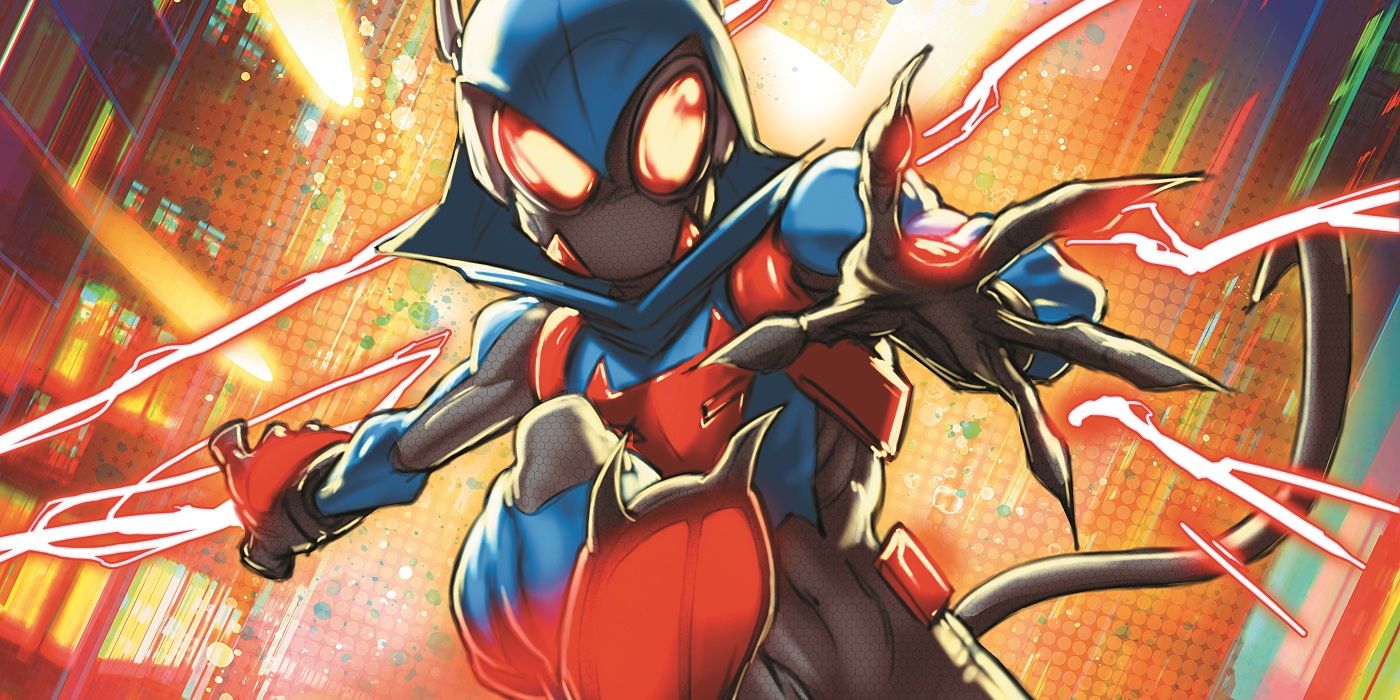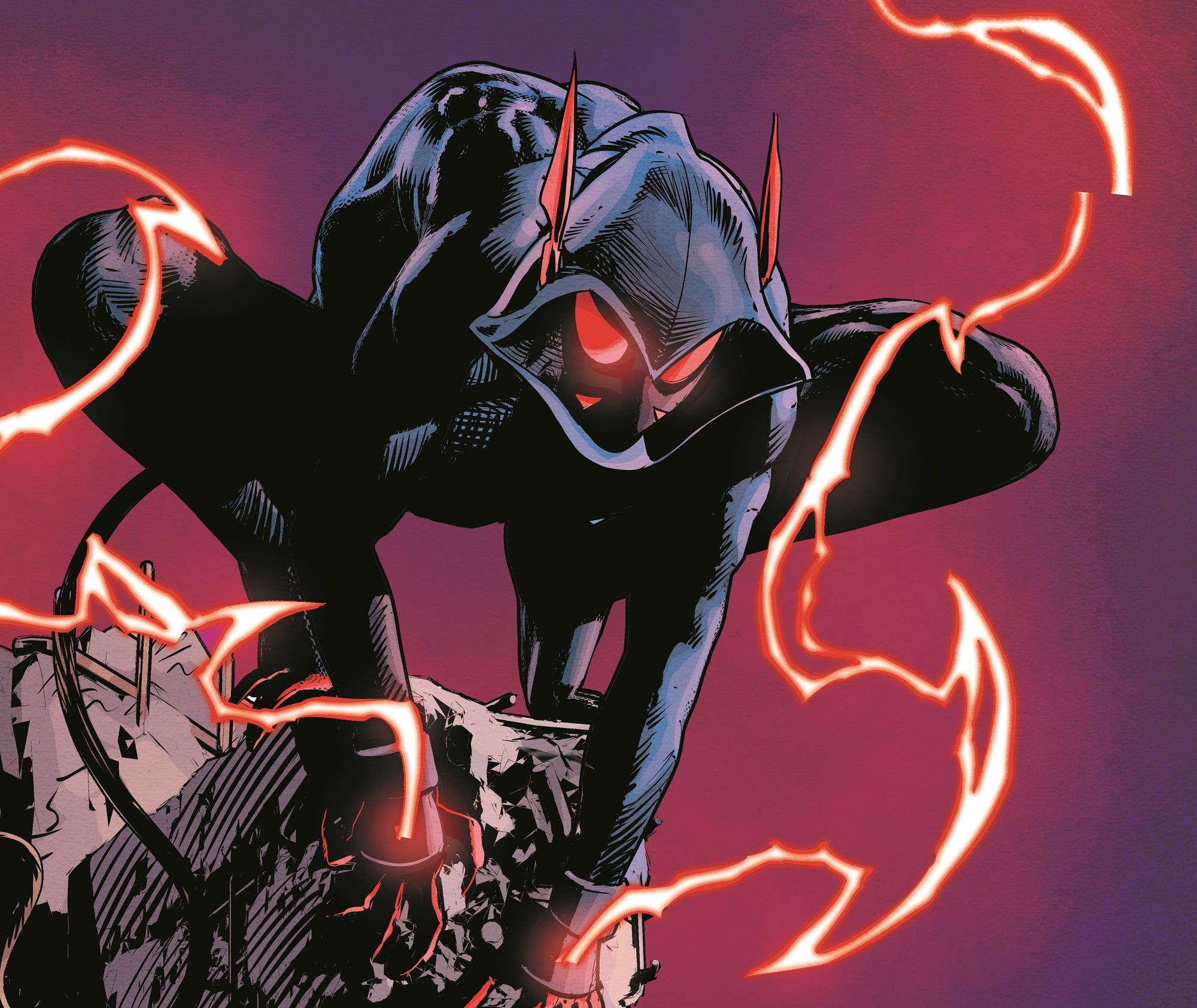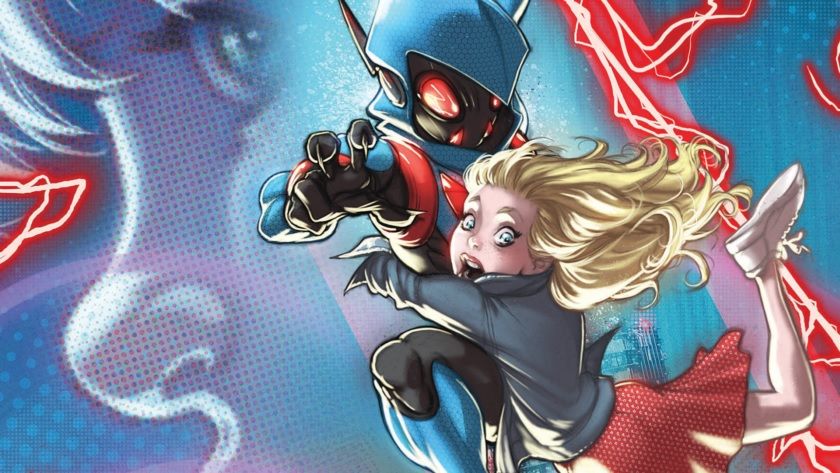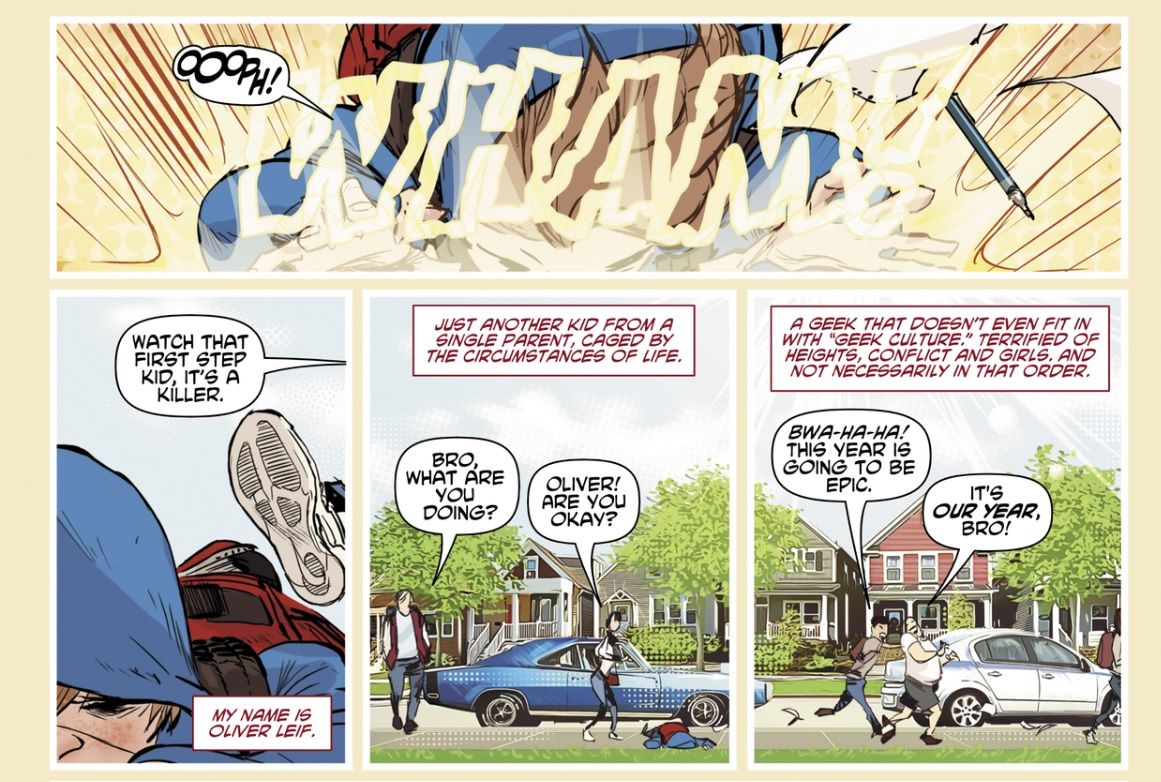Created by Kaare Andrews, Oliver Leif is the teenage superhero known as E-Ratic, who has a unique set of powers that only last for 10 minutes a day. Not only does he need to save others in such a brief period of time, but he also has to navigate the challenges of high school and his social life. To AWA Studios Chief Creative Officer Axel Alonso, E-Ratic is a true reflection of a "hero of this moment" that teens can relate to.
Ahead of the release of the upcoming E-Ratic: Recharged Volume 2, CBR chatted to Alonso about how Oliver differentiates himself from other teenage superheroes. He elaborated on how E-Ratic fits into the shared universe created by The Resistance. Alonso also touched on whether or not fans will see Oliver grow up as the series continues.
CBR: How does the character of Oliver Leif separate himself from other teenage superheroes?
Axel Alonso: E-Ratic creator Kaare Andrews is a father of four, so it was extremely important to him that Oliver really reflect the hopes, dreams, and fears of kids today and the complicated world they inherited. His family dinners are a well-spring of story ideas, I'm told.
What separates Oliver Leif from other teenage superheroes is that he was conceived to be a hero of this moment, not some bygone era. Oliver is an insecure teenager who is trying to navigate the severely stratified and complicated cultural and sociopolitical landscape and survive a world that's embracing fascism born of fear -- a world not too unlike like the one we live in.
The thing is, Oliver doesn't have an Aunt May or Bruce Wayne offering him pearls of wisdom and guidance, he's got no X-Men to be his surrogate family. What Oliver does have is an absentee dad, a single mom doing her best to make ends meet, and an older brother who's everything he's not: handsome, popular, and athletic. Simply put, Oliver can't count on anyone or anything but himself. Everything in his life is fleeting [and] temporary, including his superpowers. They're awesome, but there's a catch: He can only use them for 10 minutes a day. If E-Ratic can't save the day in 10 minutes, he's toast. If managing the life of your iPhone battery gives you agita, imagine the challenge [of] being Oliver.
The quarantine birthday stirs up a lot of memories and emotions. Was it always intentional for the story to be set after a pandemic or was it influenced by real-life events?
Kaare created E-Ratic to be a part of AWA Studios' shared universe, and the origin story of our universe actually predicted Covid and the sociopolitical climate of the world today. We did not respond to real-world events; we anticipated them. Indeed, The Resistance #1 was released the same week Covid shuttered all comic book stores.
Written and drawn months before Covid shut down the entire world, J. Michael Straczynski and Mike Deodato's The Resistance lay down the foundation for a shared universe that is strikingly relevant and more than a little prophetic. In the aftermath of a global pandemic known as The Great Death, a new race of superhumans -- nicknamed "Reborns" -- is born into a world that is embracing fascism born of fear. These reborns must navigate a world that hates and fears them and the unscrupulous opportunists who fan that fear. Sound familiar? Kaare wanted to give that universe its first teen hero.
As a YA story, are there plans for the audience to grow up with Oliver or is it likely that he'll stay at this age for the foreseeable future?
I'd describe E-Ratic as an all-ages title -- appropriate for kids and adults -- that skews toward a YA audience, so it's probably wise for Oliver to remain a relatable every-teen hero.
From an editorial perspective, how does the team approach a book like E-Ratic that's aimed at YA versus a more traditional superhero book?
The same as any book: tell a good story with an audience in mind.
Kaare Andrews mentions that his kids wanted him to do more of E-Ratic. Are they now officially the test audience for the stories?
[Laughs] I'd assume that's the case. Kaare's got a lot of kids! I've got three so I can relate.
How did the pairing of Kaare and Brian Reber come about?
After coloring the first issue himself, Kaare requested help for the rest of the series. I suggested Brian because he's got a special talent for adapting his style, so the transition would be seamless.
What is the ultimate vision for the Resistance universe?
We are creating a shared universe for the 21st century -- one that is rooted in the hopes, dreams, and fears of today. See, the DC Comics superheroes were born in the '40s and '50s -- they're costumed cops: law and order figures. Most of the Marvel heroes were born in the '60s and '70s -- they've got a strong counter-culture vibe. The world has changed a lot since then, and we want our heroes and our stories to reflect that.
Oliver Leif returns in E-Ratic: Recharged Volume 2 #1, out on Wednesday, Sept. 7, from AWA Studios.




